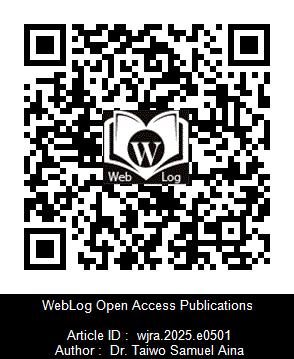
RESEARCH ARTICLE
WebLog J Robot Appl., Published on : 05 May 2025
Volume - 1: 2025 https://weblogoa.com/articles/wjra.2025.e0501
Implementation of Human Fall Activity Detection Systems
Abstract
The elderly fall detection system has seen a rapid rise in medical devices due to the prediction of a 21.64% rise in the global population of elderly individuals over 65 by 2050. A significant challenge in researching elderly fall detection is the limited availability of data. The researcher cannot collect a large enough dataset on his own; access to care providers or medical institutions is extremely limited, and they typically reject ongoing research projects. However, such problems involving signal detection and recognition are a suitable area to use a machine learning approach. This paper address and provide a systematic review of contemporary issues in human fall detection systems, focusing on sensing technologies and machine learning approaches. The paper starts with a provision of a more focused introduction to the problem of falls in elderly populations. This is followed by description of sensing technologies, state of the art, and prototype design implementation. The accuracy of 91.8% obtained here shows high accuracy which indicate that the model is performing well. The result gave Sensitivity (%) = 92.3%. The significance of sensitivity in a fall detection system lies in its capacity to explicitly indicate the system's proficiency in accurately detecting falls. A high level of sensitivity in a fall detection system enables accurate identification of falls, therefore minimizing the likelihood of overlooked falls that can have serious health implications for elderly individuals.
Keywords: Machine Learning, Signal Sensing, Human Fall Dataset, Sensing Technologies, Fall Detection
Citation
Taiwo Samuel Aina. Implementation of Human Fall Activity Detection Systems. WebLog J Robot Appl. wjra.2025.e0501.